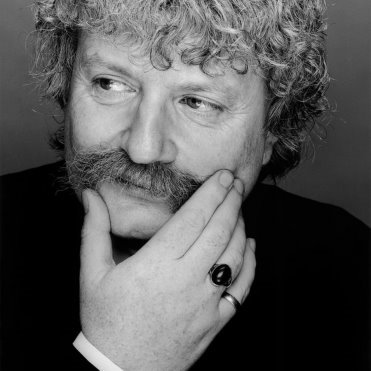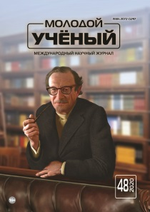Keywords: Carl Jenkins, Great Britain, Church choir, conductor, composer, instrumental music, ADIEMUS, Armed man, Mass of peace, orchestral art, London Symphony orchestra.
British instrumental music from the late 16th century was referred to as «chamber music» — any secular music that was performed by a small group of musicians or a vocalist.as a rule, such music was always opposed to Church music and was characterized by a limited circle of listeners.
By the 18th century, the influence of orchestral art formed in Italy and Germany was quite insignificant. By this time, the previously popular British Church choir was in oblivion.
The 18th century in Great Britain was the age of the instrumental ensemble, the Central point of which was the music group, not the soloist.

Popular at the time, the composer Jonathan Harvey, talking about the current trends in Church and spiritual concert music of the West at the turn of the 1980s and 1990s, said that religion brings happiness precisely when long-familiar texts, rituals and provisions update the world and acquire a new sound, the starting point of religion and art are familiar things, and developing from this point is the creation of something new from the old, synthesizing components at the highest level. The perfection of religious art is based on this fundamental coincidence of the uniquely combined functions of religion and art.
The mid-80s were a time for the musical philosopher Carl Jenkins to realize his compositional talents in composing music for advertising, theater productions, film and television. It was in this field that he realized his ideas for combining an ensemble of strings, percussion, classical or ethnic vocals, which led to the creation of the ADIEMUS project in 1995. As Jenkins himself said, he did not know what to call his project at all, and just did what he loved, philosophized, fantasized, and his inner voice and imagination suggested this name, the meaning of which Jenkins did not know, he only liked the phonetically beautiful sound combination. As it turned out, this word, which came from Latin, translated something like this: «We're getting closer» or «We're on the right track».
ADIEMUS is a huge breakthrough in his career as a composer. HE has performed this project in Japan, Germany, Spain, Finland, the Netherlands and Belgium, as well as in the UK's albert hall and Battersea power station.
The year 1999 was a significant time for Carl Jenkins, when the apotheosis of all of it was born — the most powerful anti-war oratorio for chorus, soloists and Symphony orchestra «Armed man» with the subtitle «Mass of peace»addressed to all the people of the world.
The composition was commissioned by the Royal Arsenal Museum in London for the edifying and didactic purpose of performing the work with reflections on the burning problems of war and peace in the run-up to the Millennium.
Carl Jenkins was chosen by the customers because of his consistently pacifist views. in addition, during the second half of the 1990s, this composer became known as a universally gifted master, working simultaneously successfully in the field of jazz, pop and film music, tending to a productive synthesis of the traditions of academic and popular culture.
All this foreshadowed a particularly interested attention to this project from the widest possible audience, which was facilitated by the video series accompanying the performance-edited Chronicles of the second world war, the bombing of Hiroshima, and the bloody armed conflicts of the second half of the twentieth century in Africa and the middle East.
The text has been selected, translated and partly written by guy Wilson, fulfilling at that time duties of the chief armourer. The music was written by Carl Jenkins, who dedicated his creation to the people of Kosovo who were suffering from the hardships of war while he was writing this music.
The work includes inserts from the traditional Liturgy, collected from the world's heritage, to tell a centuries-old story about the preparation for war, about the horrors and losses that inevitably accompany it. The mass ends with a prayer for a better and peaceful future.
The oratorio «Armed man»: «Mass of peace» has been performed more than 2,000 times in 20 different countries since the CD was released, and its recorded production has won seventeen gold and platinum awards.
Sir Carl Jenkins is one of the most performed living composers in the world. He was educated at Gower ton grammar school, Cardiff University, and the Royal Academy of music in London.
His works are holistic and their unique style surpassed the musical boundaries of jazz-rock. Carl Jenkins has created music for the London Symphony orchestra, for his Majesty the Prince of Wales, Bryn Terfel, Dame Evelyn Glennie and many others.
A doctor of music, he holds fellowships, honorary doctorates, and professorships at five universities or conservatories, including the Royal Academy of music, where a hall was named in his honor. In November 2009, he was awarded the Cymru for the World Award, and in March 2010, he was awarded the Hopkins medal, presented by the St David's society for the state of New York.
In 2015, he was named the most popular living composer in the Classic FM Hall of Fame and received the Classic FM «Red f« award for «outstanding service to classical music». He was awarded a knighthood in the 2015 Queen's Birthday honours for “services to composing and crossing musical genres», and his autobiography still with music was published by Elliott & Thompson. His music is published exclusively by Boosey & Hawkes.
Carl Jenkins in his works goes beyond the usual forms.
The geography of its sound palette is constantly expanding. Already there is something African, Arabic, Indian, Chinese, Celtic and even Australian in his music. In addition, almost 80–90 percent of Karl uses «live» instruments (with the exception of percussion and something else), which turns ADIEMUS not only into a Studio project, but also into a mobile living organism. But most of all, Jenkins is happy with the idea that his compositions are universal and can be performed by any orchestra with an indefinite number of female voices of different keys.
At the same time being classical, popular and ethnic, his works are based on a skillful combination of folk instruments, an orchestra and the human voice — the oldest musical instrument that people use. It's amazing how in such a non-commercial genre, Karl and his colleagues manage to compose music that has not left the charts for years and sells well.
References:
- Uilson-Dikson A. Istoriya khristianskoy muzyki [A History of Christian Music]. St. Petersburg: Mirt Press, 2001. 432 r
- Carl Jenkins. The armed man: mass of peace. Boosey & Hawkes Music Publishers Ltd 2002. 32 p
- Carl Jenkins: Still with music. My autobiography. Elliott & Thompson.: 2015. 256 s
- Karl Jenkins: The Peacemakers. Boosey & hawkes music publishers ltd.: 2012. 140 p.
- Carl Jenkins: Spiritual chants. For SATB choir and organ. Boosey & Hawkes.: 2009. 60 s







